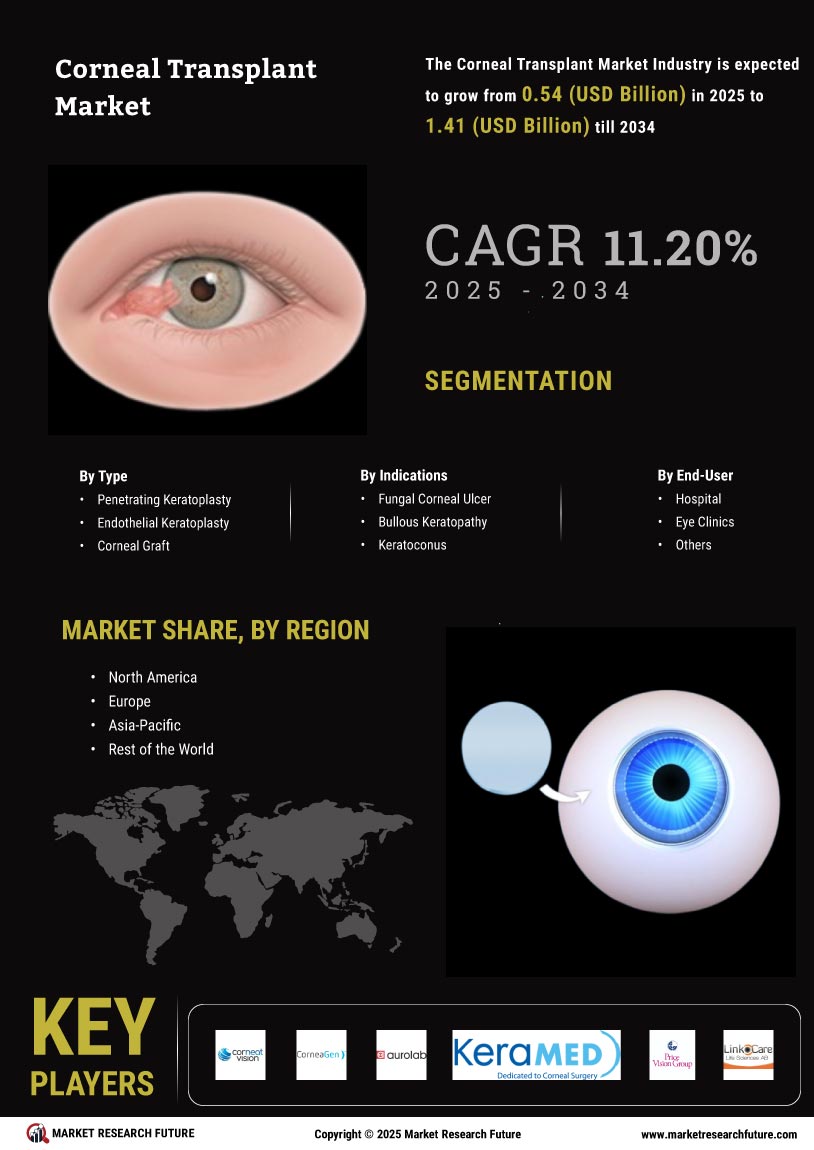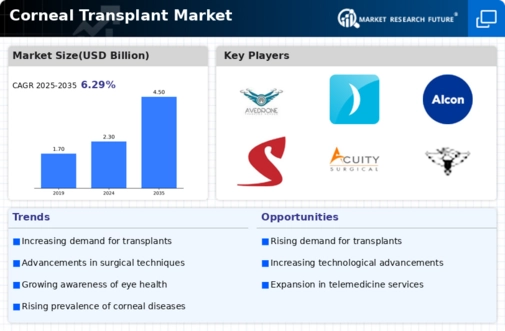Market Growth Projections
The Global Corneal Transplant Market Industry is poised for substantial growth, with projections indicating a market value of 4.5 USD Billion by 2035. This growth is underpinned by a compound annual growth rate of 6.29% from 2025 to 2035, reflecting the increasing demand for corneal transplants driven by various factors. These include advancements in surgical techniques, rising awareness of eye health, and the growing prevalence of corneal diseases. The anticipated growth trajectory suggests that the industry will continue to evolve, adapting to the changing needs of patients and healthcare systems globally.
Growing Awareness and Education
The increasing awareness and education regarding corneal health and transplantation are pivotal in driving the Global Corneal Transplant Market Industry. Public health campaigns and initiatives by organizations aim to inform individuals about the importance of eye health and the benefits of corneal transplants. This heightened awareness leads to more individuals seeking medical advice and treatment options for corneal issues. As a result, the demand for corneal transplants is expected to rise, contributing to the market's growth. The projected compound annual growth rate of 6.29% from 2025 to 2035 indicates that educational efforts are likely to yield substantial long-term benefits for the industry.
Advancements in Surgical Techniques
Innovations in surgical techniques and technologies are significantly influencing the Global Corneal Transplant Market Industry. Techniques such as Descemet Membrane Endothelial Keratoplasty (DMEK) and femtosecond laser-assisted surgery enhance the precision and outcomes of corneal transplants. These advancements not only improve patient recovery times but also expand the eligibility for transplantation, thereby increasing the overall patient pool. As these techniques become more widely adopted, the market is likely to experience accelerated growth. The anticipated market value of 4.5 USD Billion by 2035 underscores the potential impact of these technological advancements on surgical practices and patient outcomes.
Rising Demand for Organ Transplants
The growing demand for organ transplants, including corneal transplants, is a significant driver of the Global Corneal Transplant Market Industry. As more individuals require transplants due to various health conditions, the need for donor corneas is increasing. This trend is further amplified by the aging population and the associated rise in degenerative eye diseases. The market's growth is indicative of this demand, with projections suggesting a value of 2.3 USD Billion in 2024. Efforts to enhance organ donation rates and streamline transplant processes are likely to support this upward trajectory in the coming years.
Increasing Prevalence of Eye Disorders
The rising incidence of eye disorders, particularly those affecting the cornea, is a primary driver of the Global Corneal Transplant Market Industry. Conditions such as keratoconus, corneal dystrophies, and traumatic injuries contribute to the growing demand for corneal transplants. As the global population ages, the prevalence of these disorders is expected to increase, thereby necessitating more surgical interventions. In 2024, the market is projected to reach 2.3 USD Billion, reflecting the urgent need for effective treatments. This trend indicates a sustained growth trajectory, as healthcare systems adapt to the increasing burden of ocular diseases.
Increased Funding for Eye Care Research
The Global Corneal Transplant Market Industry is benefiting from increased funding for eye care research and development. Government and non-governmental organizations are investing in studies aimed at improving corneal transplant techniques and understanding the underlying causes of corneal diseases. This financial support fosters innovation and encourages the development of new therapies and technologies, which can enhance transplant success rates and patient outcomes. As research continues to advance, the market is expected to expand, driven by the introduction of novel solutions that address existing challenges in corneal transplantation.






















Leave a Comment